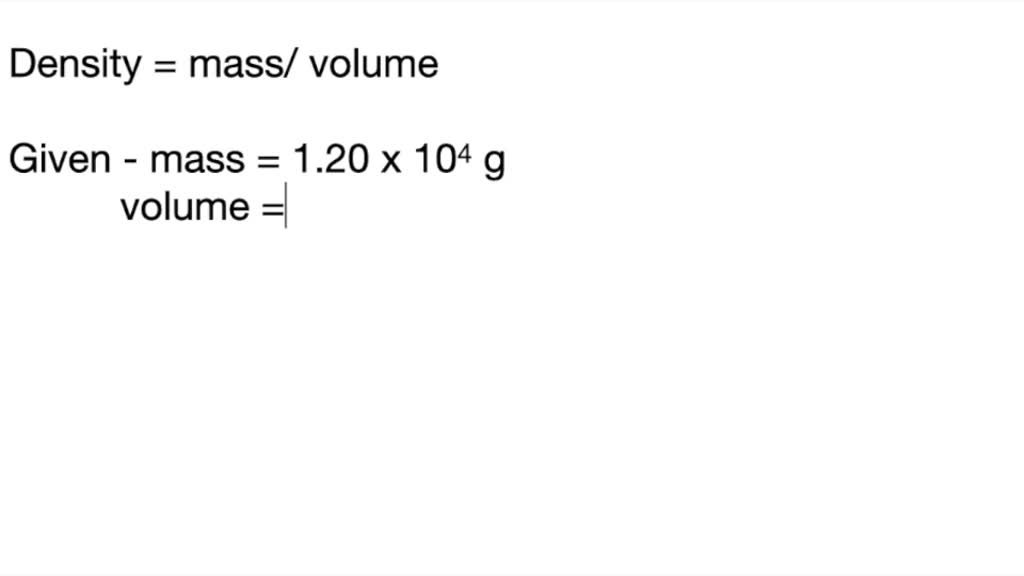

The Standard English unit is pounds mass per cubic foot ( lbm/ft 3). The standard SI unit is kilograms per cubic meter ( kg/m 3). In other words, the density (ρ) of a substance is the total mass (m) of that substance divided by the total volume (V) occupied by that substance. It is an intensive property, which is mathematically defined as mass divided by volume: Typical densities of various substances at atmospheric pressure.ĭensity is defined as the mass per unit volume. Since the iodine is added as a 1 anion, the number of electrons is 54. Because the sum of the numbers of protons and neutrons equals the mass number, 127, the number of neutrons is 74 (127 53 74). How does the atomic mass determine the density of materials? Density of Lead The atomic number of iodine (53) tells us that a neutral iodine atom contains 53 protons in its nucleus and 53 electrons outside its nucleus. Germanium is metallic in appearance and in a number of its other physical properties (see Table), but the properties of many of its compounds are those of derivatives of nonmetals. The atomic mass number determines especially the atomic mass of atoms. The mass number is different for each different isotope of a chemical element. Silicon is almost completely nonmetallic tin is almost completely metallic. For 63Cu, the atomic mass is less than 63, so this must be the dominant factor. Silicon is almost completely nonmetallic tin is almost completely metallic. A nucleus with greater binding energy has lower total energy, and therefore a lower mass according to Einstein’s mass-energy equivalence relation E = mc 2. The nuclear binding energy varies between nuclei. In a typical sample of carbon-containing material, 98.89 of the carbon atoms also contain 6 neutrons, so each has a mass number of 12.This increases the mass of nuclei with more neutrons than protons relative to the atomic mass unit scale based on 12C with equal numbers of protons and neutrons. The neutron is slightly heavier than the proton.There are two reasons for the difference between mass number and isotopic mass, known as the mass defect:

For example, 63Cu (29 protons and 34 neutrons) has a mass number of 63, and an isotopic mass in its nuclear ground state is 62.91367 u. A property closely related to an atom’s mass number is its atomic mass. If you want to calculate how many neutrons an atom has, you can simply subtract the number of protons, or atomic number, from the mass number. For other isotopes, the isotopic mass usually differs and is usually within 0.1 u of the mass number. Together, the number of protons and the number of neutrons determine an element’s mass number: mass number protons + neutrons. One unified atomic mass unit is approximately the mass of one nucleon (either a single proton or neutron) and is numerically equivalent to 1 g/mol.įor 12C, the atomic mass is exactly 12u, since the atomic mass unit is defined from it. One atomic mass unit is equal to 1.66 x 10 -24 grams. The unit of measure for mass is the atomic mass unit (amu). Therefore this resulting atomic mass is calculated from naturally-occurring isotopes and their abundance.


Note that each element may contain more isotopes. How does the atomic number determine the chemical behavior of atoms? Atomic Mass of Lead Since the number of electrons is responsible for the chemical behavior of atoms, the atomic number identifies the various chemical elements. \) Comparison of Penetrating Power,Ionizing Power and Shielding of Alpha and Beta Particles, and Gamma Rays.Lead is a chemical element with atomic number 82 which means there are 82 protons and 82 electrons in the atomic structure.


 0 kommentar(er)
0 kommentar(er)
